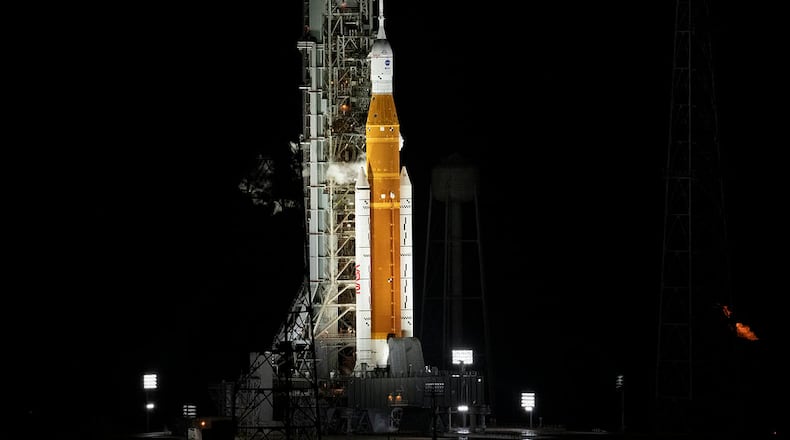Artemis I’s test mission was to send an Orion crew capsule without passengers on a 42-day voyage around the moon, testing the launch vehicle and the system’s ability to carry astronauts.
Possible backup launch windows are set for 12:48 p.m. Friday and 5:12 p.m. Sept. 5, but NASA has announced nothing specific yet.
When the launch does happen, technology provided by L3Harris will be instrumental to the effort.
The Mason company provided the booster, core and upper stage avionics, or aviation electronics, for Artemis I.
That means that during the first eight minutes of flight, more than 30 L3Harris space launch avionics systems enable command and control, trajectory and solid rocket booster jettison for the SLS, said Penny Bena, segment creative lead for L3Harris.
“Our technology are the avionics units that help power the vehicle. It controls that big, powerful machine,” L3Harris Chief Technologist Mark Dapore said in an interview.
About 100 Mason employees were directly involved in designing, testing and fabricating the 33 different avionics units on the NASA vehicle.
This NASA system really combines four vehicles in one, Dapore said, noting the pair of solid rocket boosters, the big core booster and an upper stage segment. The company has avionics on each of those rocket elements.
“We’re here to support the NASA mission,” Dapore said. “Whatever questions they may have over the course of this week as they get this issue repaired ... we will be at the ready.”
“We don’t launch until it’s right,” said Bill Nelson, NASA administrator. The episode illustrates that “this is a very complicated machine, a very complicated system, and all those things have to work. And you don’t want to light the candle until all those things are ready to go.”
L3Harris sensors helped gather data about Monday morning’s pre-launch checkout, Dapore said
Nelson said he was confident that NASA engineers would get to the bottom of the issue. “And then we’ll fly.”
If all went as planned today, the system was to return to Earth’s atmosphere Oct. 10.
NASA’s plan is to launch Artemis II, the crewed flight around the moon and back, in 2024. That will be followed by the moon landing in early 2025 with Artemis III, a NASA spokesman told the Dayton Daily News in May.
If L3Harris sounds familiar in this context, there’s a good reason. As NASA put its newest rover on Mars last year, the company had dual roles in that endeavor — avionics in the launch vehicle and technology that helped keep the Mars 2020 Perseverance rover connected to Earth.
The company has about 800 employees in Mason.
About the Author

